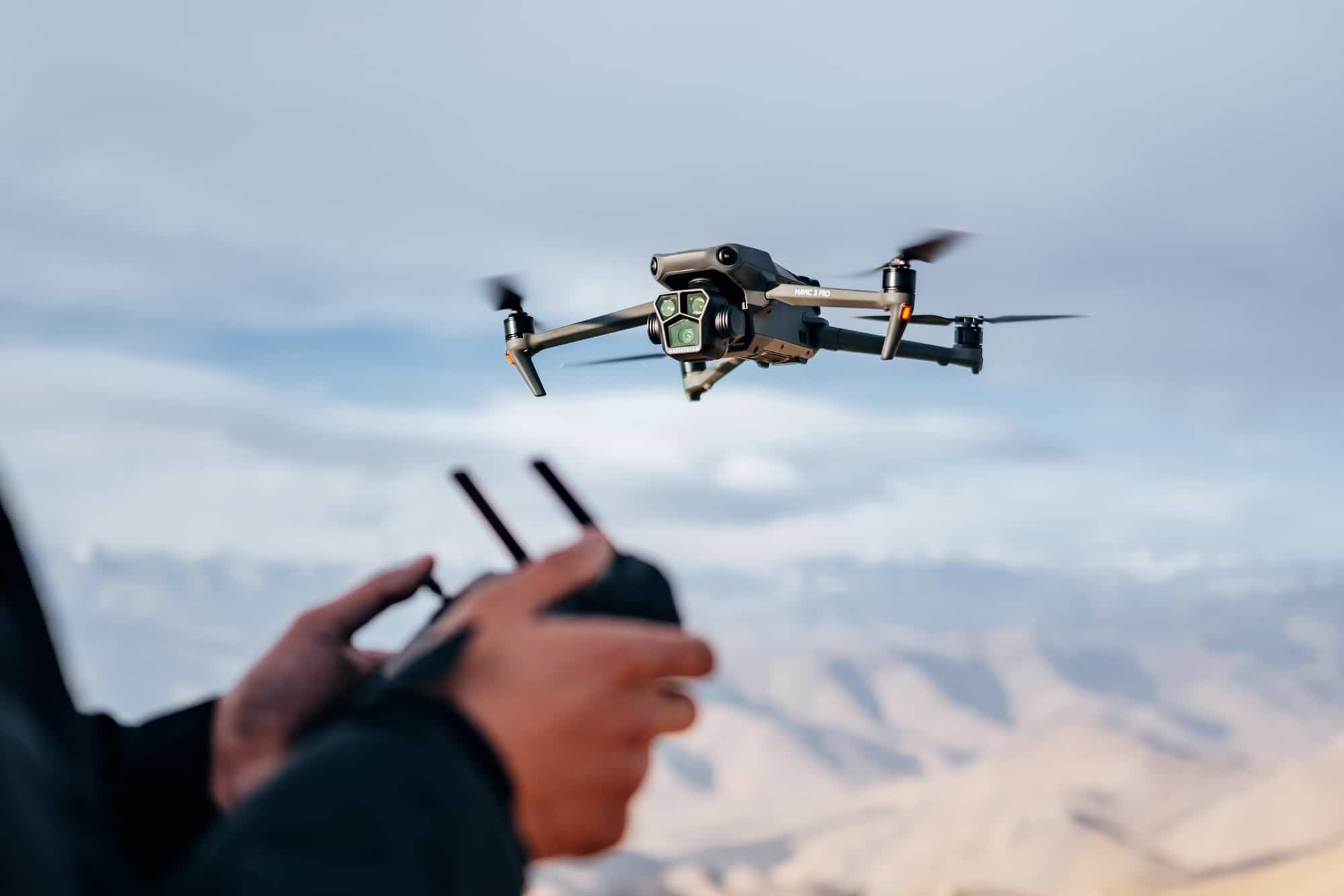DJI has revolutionized the drone industry, offering a diverse range of high-quality drones tailored for enthusiasts, professionals, and businesses. As we delve into the top 5 DJI drones for 2024, it’s evident that these aerial marvels continue to set the standard for innovation, performance, and versatility.
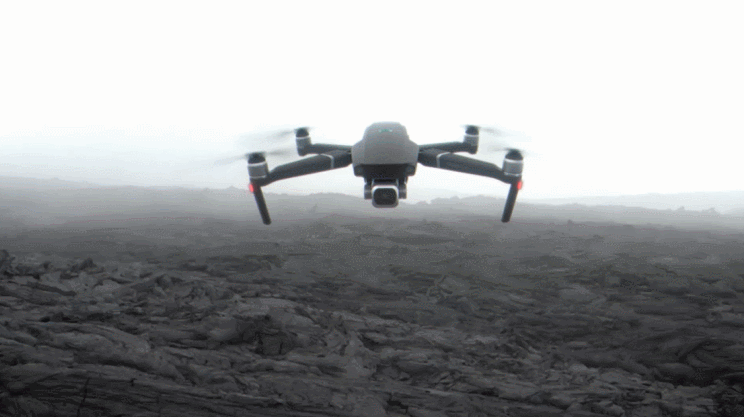
Whether you’re an avid photographer, filmmaker, or mapping professional, DJI’s lineup caters to various needs, reflecting the company’s commitment to pushing the boundaries of what drones can achieve. Join us as we explore the cutting-edge features and capabilities that make these drones the best choices in 2024.
DJI Mavic Air 2

A. Key Features
- 48MP Camera with 4K Video Capability: The Mavic Air 2 boasts a powerful 48MP camera, ensuring stunning stills, while its 4K video capability captures cinematic footage with incredible detail.
- Intelligent Shooting Modes and Obstacle Sensors: Equipped with intelligent shooting modes, this drone makes capturing professional-quality shots a breeze. Obstacle sensors enhance safety and prevent collisions during flight.
- Advanced Flight Performance and Extended Battery Life: Enjoy an unparalleled flying experience with advanced flight performance features. The extended battery life ensures more time in the air, allowing for extensive exploration and creative captures.
B. Pros and Cons
- Pros:
- High-Resolution Camera: Perfect for photography and videography enthusiasts.
- Intelligent Features: Automated shooting modes for effortless content creation.
- Long Flight Time: Extended battery life for prolonged aerial adventures.
- Cons:
- Limited Payload Capacity: May not support heavy accessories or additional equipment.
- Price: Higher cost compared to entry-level drones.
- Learning Curve: Advanced features may require time to master for beginners.
DJI Mini 2
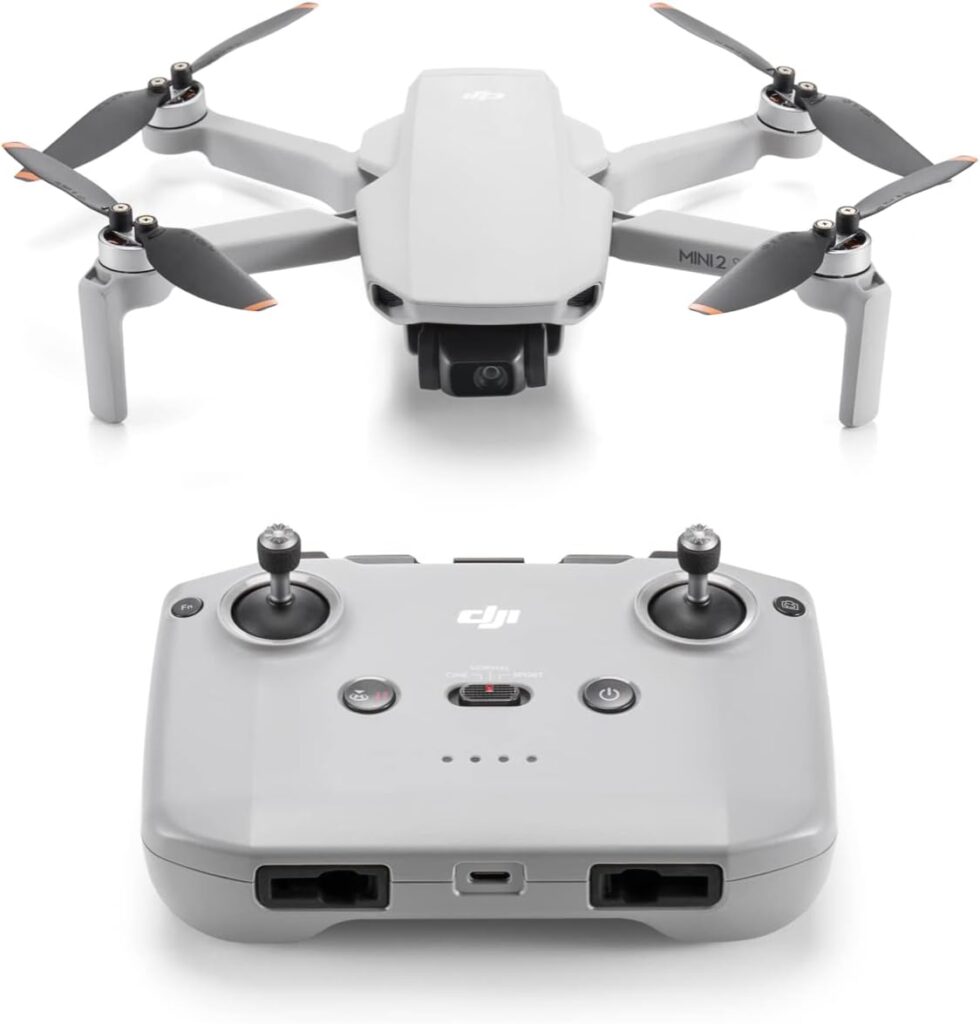
A. Key Features
- Compact and Lightweight Design: The DJI Mini 2 is designed for portability, featuring a compact and lightweight build that makes it easy to carry anywhere.
- 4K Video Recording with a 12MP Camera: Despite its small size, the drone packs a punch with a 12MP camera capable of recording in stunning 4K resolution, ensuring high-quality aerial footage.
- Enhanced Wind Resistance and Intelligent Shooting Modes: Built to handle varying weather conditions, the Mini 2 offers enhanced wind resistance. Intelligent shooting modes add creativity to your captures.
B. Pros and Cons
- Pros:
- Portable: Ideal for travelers and outdoor enthusiasts due to its small size.
- 4K Video: High-resolution video recording capabilities for quality footage.
- User-Friendly: Easy to operate, making it suitable for beginners.
- Cons:
- Limited Range: Smaller range compared to larger, more advanced drones.
- Lack of Obstacle Sensors: Absence of obstacle avoidance sensors may require cautious piloting.
- Smaller Image Sensor: Limited in low-light performance compared to larger drones.
DJI Mavic Pro 2
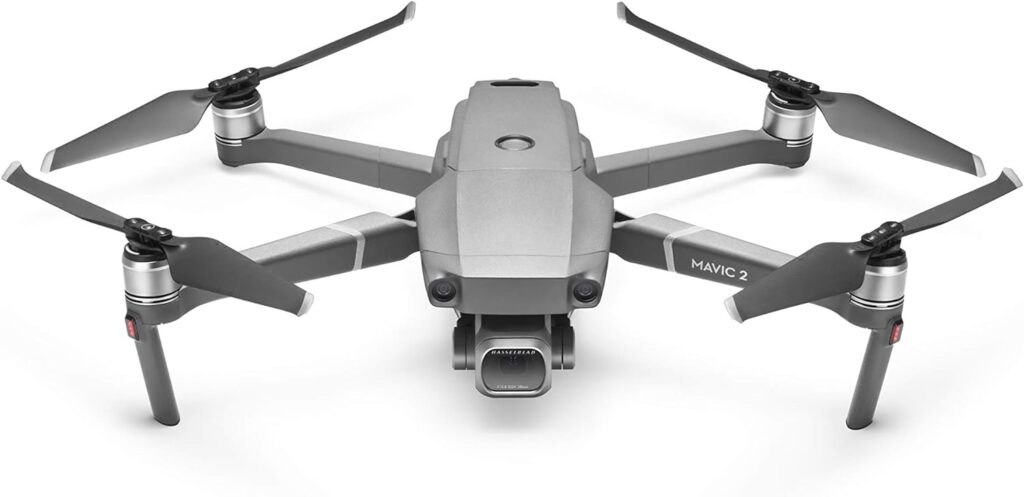
A. Key Features
- Hasselblad Camera with a 1-inch CMOS Sensor: The Mavic Pro 2 is equipped with a Hasselblad camera, featuring a large 1-inch CMOS sensor that delivers exceptional image quality and clarity.
- Adjustable Aperture for Versatile Shooting: With an adjustable aperture, users have greater control over the drone’s exposure settings, allowing for versatile shooting in various lighting conditions.
- Advanced Obstacle Avoidance Technology: The drone boasts advanced obstacle avoidance capabilities, using sensors to detect obstacles in its path and navigate around them, enhancing flight safety.
B. Pros and Cons
- Pros:
- High-Quality Camera: Capture professional-grade photos and videos with the renowned Hasselblad imaging technology.
- Obstacle Avoidance: Enhanced safety during flight with obstacle sensors.
- Professional-Grade Features: Offers advanced features suitable for professional photographers and filmmakers.
- Cons:
- Size and Weight: Larger and heavier compared to more portable drones.
- Price: Higher cost associated with premium features.
- Learning Curve: May have a steeper learning curve for beginners due to its advanced capabilities.
DJI Phantom 4 RTK
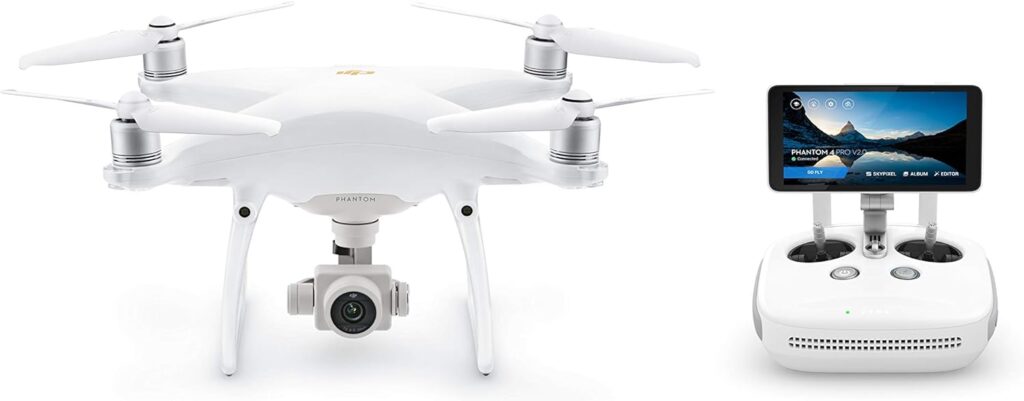
A. Key Features
- Real-time Kinematic (RTK) Positioning for Precision Mapping: The Phantom 4 RTK employs RTK technology, providing centimeter-level accuracy in real-time, making it ideal for precision mapping and surveying applications.
- 20MP Camera with 4K Video Recording: Equipped with a high-resolution 20MP camera, the drone captures detailed imagery, complemented by 4K video recording capabilities for comprehensive aerial data collection.
- Intelligent Flight Modes and High-Precision Vision Sensors: The drone features intelligent flight modes for automated missions and is equipped with high-precision vision sensors to navigate and avoid obstacles with precision.
B. Pros and Cons
- Pros:
- RTK Precision: Achieve unparalleled accuracy in mapping and surveying applications.
- High-Resolution Camera: Capture detailed aerial imagery with the 20MP camera.
- Advanced Sensors: Intelligent sensors enhance flight safety and obstacle avoidance.
- Cons:
- Cost: The advanced RTK technology may come with a higher price tag.
- Complexity: Operation may require specialized knowledge for optimal use.
- Size: The Phantom 4 RTK is larger and less portable than some consumer-oriented drones.
DJI Inspire 2
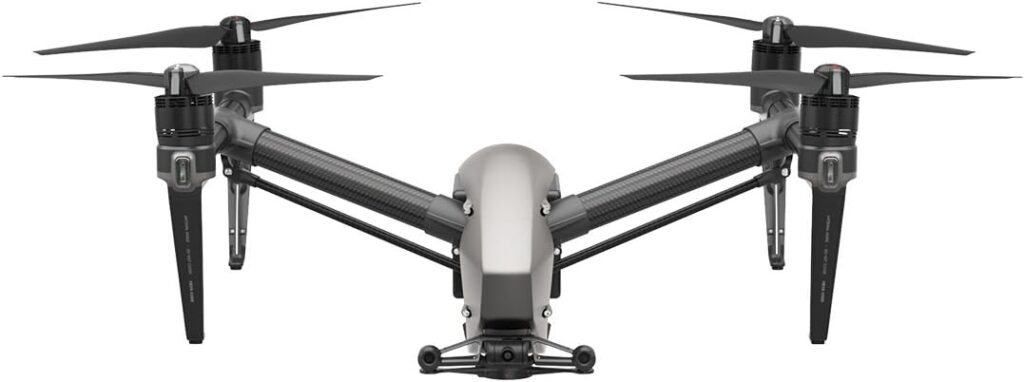
A. Key Features
- Interchangeable Cameras and Professional Cinematography Capabilities: The Inspire 2 stands out with its ability to use interchangeable cameras, catering to professional cinematographers’ diverse needs, ensuring high-quality aerial footage.
- Dual Battery System for Extended Flight Time: Equipped with a dual battery system, the drone extends its flight time, allowing for longer and more complex aerial cinematography tasks.
- Advanced Obstacle Sensing and Intelligent Flight Modes: The drone features advanced obstacle sensing technology, enhancing flight safety. Intelligent flight modes provide automated and precise control for various cinematic shots.
B. Pros and Cons
- Pros:
- Professional Cinematography: The ability to use interchangeable cameras makes it a top choice for filmmakers and cinematographers.
- Dual Battery System: Extended flight time ensures more productivity during aerial shoots.
- Obstacle Sensing: Advanced sensors contribute to safer and more reliable flight operations.
- Cons:
- Cost: Professional-grade features come with a higher price point.
- Complexity: Operating the Inspire 2 may require specialized skills and training.
- Portability: The drone’s larger size may be less convenient for users prioritizing portability.
Conclusion
To recap, the diverse range of DJI drones offers options for every drone enthusiast. The DJI Mavic Air 2 impresses with its high-resolution camera and intelligent features, while the DJI Mini 2 stands out for its portability and 4K capabilities.
Professional cinematographers may find the DJI Inspire 2 appealing with its interchangeable cameras and extended flight time. The DJI Mavic Pro 2 excels in camera quality and obstacle avoidance, and precision mapping enthusiasts may opt for the DJI Phantom 4 RTK with its Real-time Kinematic positioning.
Whether you’re a casual hobbyist or a professional filmmaker, DJI provides cutting-edge technology to elevate your drone experience.

